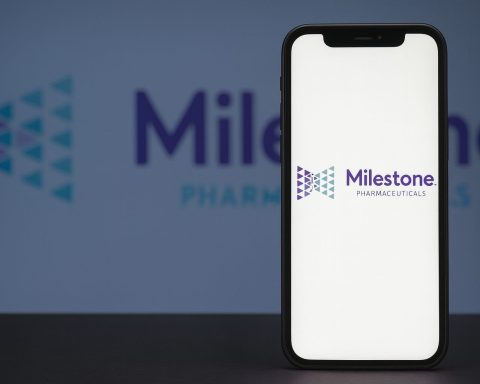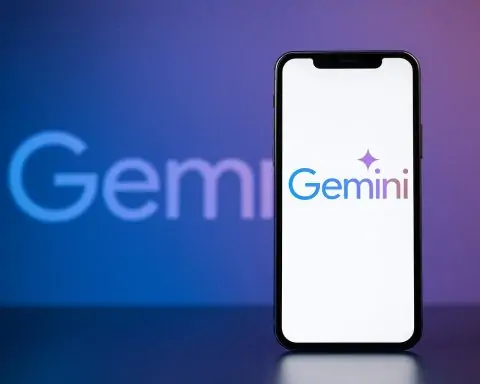- Humanize AI is marketed as an “AI to Human Text Converter” that can rewrite input from ChatGPT, Google Bard, Bing, Jasper, Grammarly, or QuillBot into “100% human-like” content, with no sign-up required for basic use and paid tiers for higher volumes.
- It offers multiple tones and modes—Standard, Formal, Informal, Simple, Flowing—and two rewrite depths called Basic and Ultra.
- It advertises AI detection shielding, claiming to bypass detectors such as Originality.ai, GPTZero, and Turnitin, while preserving SEO-critical keywords.
- It supports multilingual output (English, Chinese, Russian, Arabic, Japanese, and more) and bundles a grammar checker, plagiarism checker, and its own AI content detector with an AI-score indicator.
- Independent testing by Codingem found that Humanize AI achieved an average 46.2% “human-written” score across AI detectors, while prompting ChatGPT to rewrite yielded 72% in the same test.
- Pricing includes Free Basic mode (up to about 1500 words per use), Lite $19/month (~20,000 words/month), Standard $29/month (~50,000 words), and Pro $79/month (150,000+ words).
- QuillBot’s AI Humanizer is part of a broader suite with 9 paraphrase modes, including Humanize, plus a slider to control how much text changes and a “freeze words” feature.
- QuillBot is integrated via Chrome, Edge, Word, Google Docs, etc., with a Free plan allowing paraphrase up to 125 words at a time; Premium unlocks unlimited words and all 9 modes, priced at $19.95/month or $99.95/year, plus a Team Plan around $15/user/month.
- Grammarly’s AI Humanizer is a free web tool accessible inside Grammarly’s editor and extensions, offering one-click rewriting and tone adjustments via GrammarlyGO, but independent reviews show it does not effectively evade AI detectors.
- The article concludes that for different needs: use Humanize AI for detector evasion, QuillBot for versatility and cost efficiency, and Grammarly for quality, clarity, and ethical transparency, with future ideas like persona-based rewriting and emotion infusion.
In a world flooded with AI-written text, new “AI humanizer” tools promise to turn robotic prose into natural, human-sounding writing. Students, professionals, and content creators are using these tools to polish AI-generated drafts – and even to evade AI detectors that flag machine-written content [1] [2]. But how do the leading solutions stack up? We compare Humanize AI, QuillBot’s AI Humanizer, and Grammarly’s AI Humanizer on features, strengths, weaknesses, pricing, expert reviews, and performance in tasks like tone conversion, clarity enhancement, and AI detection evasion. Read on for an in-depth, up-to-date analysis of these platforms and what they offer for academic, professional, and casual writing needs.
What Are AI Humanizers and Why Do They Matter?
AI humanizers are tools that rewrite AI-generated text to sound more natural and engaging [3]. Even when AI content is factually correct, it often lacks the warmth, flow, and tone of genuine human writing [4] [5]. Text generated by models like ChatGPT can come across as formulaic – using repetitive sentence structures, overly formal phrasing, or filler words. AI humanizers address this by adjusting wording, sentence flow, and tone so the output “feels like a real person wrote it” [6] [7]. The benefits include:
- Better Readability & Tone: They smooth out awkward phrasing and add a conversational tone, making content clearer and more relatable [8] [9]. This is useful for everything from work emails to blog posts and ads.
- Credibility & Trust: Content that reads as obviously machine-generated can undermine the author’s credibility. Humanizers add human touches that make writing sound authentic and trustworthy [10] [11]. (As writing expert Elizabeth Danziger notes, “Authenticity is everything… If [clients] suspect an email or report has been written by AI, they throw it away.” [12])
- Saving Time: Manually editing AI text for tone and flow is time-consuming. These tools automate the process, letting writers focus on research, ideas, and higher-level edits [13].
However, ethical use is important. Universities and employers may discourage using AI to hide automation, and AI detectors are continually evolving. Grammarly, for instance, cautions that while humanizers can make writing sound more natural, their use “can be frowned upon in certain contexts” and recommends transparency about AI involvement [14]. With that context in mind, let’s dive into each tool.
Humanize AI – The AI-to-Human Text Converter
Humanize AI is a dedicated online tool focused on one goal: making AI-generated text indistinguishable from human writing. It’s often described as an “AI to Human Text Converter” or simply the Humanize AI text tool. The service is free to use (no sign-up required) for basic usage, with premium tiers for higher volumes. According to its website, Humanize AI can take input from ChatGPT, Google Bard, Bing, Jasper, Grammarly, QuillBot, or any AI writer, and rewrite it to “100% human-like” content [15] [16]. The creators boast that the output “bypasses all AI detection systems currently available”, including tough detectors like Originality.ai, GPTZero, and Turnitin [17] [18].
Features & Capabilities
Humanize AI’s interface is straightforward: you paste AI-generated text, complete a captcha (to prove you’re not a bot using the bot-hiding tool!), and hit “Humanize.” The system then rephrases the text to eliminate robotic tone while retaining the original meaning and context [19] [20]. Notable features include:
- Multiple Tones/Modes: Users can choose from modes like Standard, Formal, Informal, Simple, Flowing, or even Expand/Shorten to adjust length [21]. There are also two rewrite “depth” settings: Basic and Ultra mode. Basic mode provides a lighter touch and is available free, while Ultra (a more advanced rewrite for maximum human-likeness) is part of paid plans [22].
- AI Detection Shielding: The tool specifically targets patterns that AI detectors look for. For example, AI text often has overly predictable phrasing or lacks contractions and slang – Humanize AI rewrites these to more human-like variations [23]. The service also claims to preserve SEO-critical keywords so that humanized content still ranks well, all while “bypassing AI detectors” by achieving a high “human-written” score [24] [25].
- Multilingual Support: Unlike some rivals, Humanize AI supports multiple languages (English, Chinese, Russian, Arabic, Japanese, etc.) [26], which broadens its use cases globally.
- Extra Tools: The platform goes beyond humanizing. It advertises a built-in grammar checker and plagiarism checker to ensure the final output is polished and original [27]. It even offers an AI content detector of its own – somewhat ironically, you can see how “robotic” your text was before and after, using its AI-score indicator [28].
Use Cases: Humanize AI is pitched especially at content writers, SEO specialists, and students who use AI drafts but don’t want them to sound AI-written. For example, a blogger might generate an article outline with ChatGPT and then run it through Humanize AI to add a more personal, engaging tone. Students have also eyed such tools to rewrite AI-assisted homework in hopes of evading detection software. (The site explicitly mentions its goal of “preventing AI detectors from unfairly flagging” content [29].) However, using it in academic settings can breach integrity policies – so caution is advised. In professional settings, copywriters might use Humanize AI to ensure marketing copy crafted with AI feels empathetic and culturally tuned rather than algorithmic [30].
Strengths & Weaknesses
The main strength of Humanize AI is its specialization. It was “built with evasion in mind,” as one reviewer put it [31]. It doesn’t just swap synonyms; its proprietary algorithms do deeper sentence restructuring and add colloquial flair to try to mimic genuine writing [32] [33]. It also requires no installation or signup, making it a quick solution when you need it. Users on forums often praise that it “preserves the original meaning and context” well [34] and that the output generally reads fluently and naturally for most content types [35]. The free unlimited use (for Basic mode) is a big plus – you can humanize as much text as you want without paying, which sets it apart from many competitors.
However, independent tests cast doubt on the “100% undetectable” claim. In an experiment by Codingem, content processed by Humanize AI only achieved an average 46.2% “human-written” score across multiple AI detectors – meaning it still looked roughly half AI [36]. In fact, simply prompting ChatGPT itself to rewrite the text yielded a much higher 72% human-score, leading the reviewer to state: “ChatGPT did a significantly better job at humanizing AI content than HumanizeAI… I’d use ChatGPT over HumanizeAI all day.” [37]. This suggests that while Humanize AI can remove some tell-tale signs, it may not reliably fool the more advanced detectors (especially as of 2025). Another noted weakness is that Basic mode outputs can feel generic, and Ultra mode, while more polished, sometimes leans a bit formal or changes nuances if you use options like Simplify/Expand [38]. Essentially, it might sand off AI’s rough edges, but it isn’t a miracle worker if the input text is poorly written or logically flawed – as the Codingem reviewer quipped, “If you have bad text, it will remain bad.” [39].
Finally, there’s the ethical consideration. Humanize AI unabashedly markets itself for bypassing detectors (even featuring stats like “99.54% Success Rate” on its site banner). While this appeals to some users, it also raises questions. Using it to deceive academic plagiarism or AI-detection systems could be risky. And if overused, humanizers could contribute to an arms race between AI generation and detection. As Gold Penguin’s analysis pointed out, tools like this are effective at evasion, but “there’s always an ethical conversation to be had” about their use [40].
Pricing and Value
Humanize AI operates on a freemium model. The core web tool can be used free with no sign-up, but there are paid plans for heavy users and additional features. According to the latest info, the tiers are: Free (humanize up to ~1500 words at a time), Lite – $19/month (~20,000 words/month), Standard – $29/month (~50,000 words), and Pro – $79/month (150,000+ words) [41] [42]. All plans allow unlimited use of the tool, but the higher tiers increase the word count limits per month and may unlock the Ultra mode or faster processing. There are also indications of an API for developers (in beta) and possibly custom enterprise plans.
In terms of value, Humanize AI’s paid plans are on the pricey side given their word caps. For example, $29/month for 50k words is significant, considering that’s roughly equivalent to a handful of long articles. However, the free option makes it easy to test and even use regularly for shorter texts. If your primary need is occasional AI text cleanup, you might get by with the free service. The paid plans could make sense for SEO agencies or content teams generating large volumes of AI content who want to routinely humanize them at scale. Still, some experts argue that investing in better AI writing practices might be more efficient. “Don’t use these tools! …It’s not because it’s unethical. It just doesn’t work,” the Codingem reviewer concluded bluntly after testing 16 humanizers [43]. That might be an overstatement for all scenarios, but it underscores that Humanize AI’s value depends on your goals. If detection evasion is mission-critical, you might seek more advanced or custom solutions; if you mainly want stylistic improvement, other multi-purpose tools could offer more bang for your buck.
Latest Developments
Humanize AI emerged amid the 2023 boom in AI-detection anxiety, and it has been updating its algorithms to keep up with new detectors. The platform’s mention of Gemini and Grok (newer AI models from Google and Amazon) implies it’s staying current with the evolving AI landscape [44]. As AI detectors get smarter (e.g., using “adversarial detection” techniques [45]), humanizer tools are also stepping up their game. Some anticipated innovations include more persona-based rewriting (mimicking a specific writing style to add individuality) and emotion infusion into text (so it doesn’t just read as neutral) [46] [47]. We haven’t seen a major new model announcement from Humanize AI yet, but given the competitive space, it wouldn’t be surprising if they integrate larger language models for more sophisticated rephrasing or introduce features like a “voice replicator” similar to what Undetectable AI offers [48]. For now, Humanize AI is a strong niche tool – a specialist in making AI text human – but it faces stiff competition from more established writing assistants that have added humanizing features.
QuillBot’s AI Humanizer – Polishing and Paraphrasing with AI
QuillBot is a well-known AI writing assistant famous for its paraphrasing capabilities. In early 2023, QuillBot introduced a dedicated “AI Humanizer” mode into its paraphrasing toolset to specifically target robotic-sounding text. Unlike HumanizeAI, QuillBot’s humanizer isn’t a standalone product but part of a broader suite that includes a grammar checker, plagiarism checker, summarizer, translator, and even an AI chatbot. This means QuillBot can serve as a one-stop solution for writers who need to refine content in multiple ways. Its AI Humanizer feature is accessible via the web editor (and browser extensions) by selecting the Humanize mode or using the separate “AI Humanizer” tool page.
Features & Capabilities
QuillBot’s AI Humanizer rewrites AI text to be more natural, engaging, and human-like, much like HumanizeAI. Key features include:
- Paraphrasing Modes: QuillBot offers 9 predefined paraphrase modes – e.g. Standard, Fluency, Formal, Simple, Creative, Expand, Shorten, Academic, and Humanize [49] [50]. The Humanize mode is tuned to “rewrite text in a more human, authentic way” [51]. Users can toggle between these modes to get different rephrasings. This is great for tone conversion: e.g., switch to Formal for an official report, or Simple for plain language, then maybe Humanize to add a conversational feel.
- Control Over Changes: A notable QuillBot feature is the ability to adjust how much the text is changed. There’s typically a slider to decide how aggressive the paraphrasing should be, and you can lock certain words (“freeze words”) so they aren’t altered. The Humanizer respects these settings, so you can preserve key terms or names. This gives writers fine control – you can aim for subtle humanization or a thorough overhaul. QuillBot’s tool even lets you click on any word to see synonyms and manually pick alternatives [52].
- Integration and Ease of Use: QuillBot integrates with Chrome, Edge, Word, Google Docs, etc. via extensions [53] [54]. This means you can highlight a paragraph in Gmail or Word and rephrase it with Humanize mode without leaving your workspace. It’s very convenient for day-to-day professional writing. The interface is user-friendly – paste text on the left, choose mode, click Humanize, and the rewritten text appears on the right, ready to copy. You can also upload documents for bulk rewriting [55].
- Additional Writing Tools: Beyond humanizing, QuillBot’s premium gives access to a Grammar Checker (to fix errors post-paraphrase), a Summarizer, and even a built-in AI Content Detector (so you can see if your humanized text still flags as AI) [56] [57]. They also recently added QuillBot AI Chat and a guided writing tool called QuillBot Flow, showing the company is expanding into generative AI assistance.
Use Cases: QuillBot’s humanizer is popular with students and educators. Students use it to improve readability of AI-generated drafts or to paraphrase sources in a human-like way (though using it to evade Turnitin’s AI checks is contentious). Educators themselves might use QuillBot to simplify complex text for lesson materials (using modes like Simple + Humanize for clarity). Researchers and academics find it handy to maintain an academic tone while ensuring the prose isn’t stilted – e.g., running a technical section through Humanize mode can add a bit of narrative flow without losing precision. Content marketers and bloggers also leverage QuillBot: one can generate a rough section with an AI, then let QuillBot rephrase it to sound more original and engaging [58], reducing the “ChatGPT feel.” And because QuillBot supports 40+ languages for translation and paraphrasing [59] [60], non-native English speakers often use it to make their writing sound more natural in English. For casual use, even crafting social media posts or personal emails, QuillBot can be useful – write a draft (by human or AI), then humanize it to add warmth or clear up awkward phrases.
Strengths & Weaknesses
Strengths: QuillBot’s biggest strength is its versatility. You get the humanizer plus a full toolkit of writing aids in one platform. Users praise QuillBot’s paraphrasing quality – it’s been a market leader in that space, known for preserving meaning while offering varied phrasings. The Humanize mode specifically is good at injecting a more natural rhythm and flow: QuillBot’s site notes it can “increase clarity by adding transitions and nuance” and “replace robotic text with natural language.” [61] It also helps avoid repetition, a common issue in AI text, by finding alternative expressions [62]. Another strength is integration: QuillBot is everywhere you write (web, plugins, etc.), whereas standalone tools like HumanizeAI require copy-pasting into a separate site. QuillBot’s reputation is also strong – it’s trusted by over 35 million users worldwide, including many in academia [63] [64]. This trust is important if you’re considering a premium purchase; the company (now part of Learneo, Inc.) has been around for years refining its algorithms.
Additionally, QuillBot’s affordable premium pricing (around $8–10 per month on annual plans) gives you unlimited use, which can be better value than pay-per-word models. The premium Humanizer (Advanced mode) can make deeper changes than the free version, producing more nuanced human-like text [65]. QuillBot also shines in basic grammar and style fixes: it will not only humanize the tone but catch grammatical errors the AI made. This dual fix – clarity and correctness – means the final output from QuillBot tends to be polished. For instance, it’s effective for turning a slightly off AI translation into fluent, error-free sentences in the target language.
Weaknesses: On the flip side, QuillBot is not as single-mindedly focused on detector evasion as some competitors. Reviews have found that content run through QuillBot’s Humanize mode still often registers as AI-written. In one test, Originality.ai flagged QuillBot-rewritten text as 96% likely AI [66], and GPTZero similarly detected it. The text’s sentence patterns remained recognizably machine-like despite QuillBot’s changes [67]. The conclusion was that QuillBot’s humanizer “improves tone and grammar, but doesn’t perform well for bypassing AI detection” – many rewritten passages were “still flagged as AI-generated” [68] [69]. In a direct comparison, Grammarly’s humanizer also struggled with detection (as we’ll see), but specialized tools like Undetectable AI did far better [70] [71]. So if your main goal is to trick detectors, QuillBot isn’t the most reliable; it’s first and foremost a writing enhancer.
Another weakness is that the free version is limited. Free users can only paraphrase 125 words at a time [72], which is basically a couple of paragraphs. This can be tedious for longer essays (you’d need to humanize piece by piece or upgrade). Free access also only gives you two modes and the basic Humanize function (what QuillBot calls “Basic mode” humanization) [73]. The more subtle rewriting and the ability to truly fine-tune tone might require Premium’s “Advanced mode” humanizer [74]. Additionally, QuillBot currently supports English primarily for full functionality (its grammar checker, for instance, is English-only [75]). So if you wanted to humanize, say, a Spanish text, QuillBot might translate it to English and back, which isn’t as direct.
Lastly, some users note QuillBot’s outputs can occasionally alter meaning if you’re not careful. For example, in highly technical or legal text, the humanizer might introduce slight changes in wording that don’t preserve the exact nuance. It’s always advised to double-check the output, especially for critical documents. And while QuillBot adds transitions and flow, this can sometimes overshoot and add a bit of verbosity or “mechanical” feel of its own [76] [77] – ironically, an AI trying to sound human might add filler phrases that a concise human writer wouldn’t use. Overall, QuillBot is extremely useful for making AI (and human) writing better, but it’s not a silver bullet for hiding AI origins.
Expert Opinions & Reviews
QuillBot’s AI Humanizer has been examined by a few independent reviewers. HumanizerPro.ai (a competitor’s blog) ran GPT-4 text through QuillBot’s strongest humanizing settings and found that while grammar was cleaned up, the text “still read like it was written by a machine” in many cases [78]. They observed that vocabulary changes alone weren’t enough – QuillBot tended to leave the underlying sentence structure intact, which AI detectors and discerning readers can pick up on [79]. The review did praise QuillBot in other areas, saying it’s “a versatile writing assistant” and highlighting its strengths for ESL writers, technical content simplification, and multi-language support [80]. The verdict was that QuillBot is excellent for basic proofreading and quick rewording, but “not a reliable tool if your main goal is to bypass AI detectors like Turnitin or GPTZero.” [81]
Another comparison on Reddit and writing forums often puts QuillBot as a top choice for paraphrasing quality, though some writers feel the Humanize mode isn’t dramatically different from its standard mode – it’s essentially an evolution of what QuillBot was already good at (producing fluent paraphrases). As one commenter summarized: “QuillBot’s humanizer helps with tone and clarity, but the scores [on AI detection] are just not going to cut it” – reinforcing that you should use QuillBot to improve writing, not solely to mask AI [82].
On the positive side, many educators and professionals endorse QuillBot for legitimate uses. In a HumanizeAI.com blog comparison, the author noted “QuillBot shines with its powerful paraphrasing abilities, while Grammarly leads in grammar checking and writing clarity” [83]. That captures the consensus: if you need to rephrase or re-style content, QuillBot is a go-to tool. It’s often mentioned alongside Grammarly as complementary – QuillBot for rewriting and vocabulary, Grammarly for error correction and polishing [84] [85].
Pricing & Plans
QuillBot offers a Free plan and a Premium plan. The Free plan (no expiration) lets you try the basics: paraphrase up to 125 words at once, use 2 modes (Standard and Fluency), get basic grammar fixes, and even “humanize text in Basic mode” for free [86]. This is enough to experiment and use on short snippets. The Premium plan unlocks the full power: unlimited words, all 9 modes (including the full Humanize mode), faster processing, and access to the plagiarism checker and other advanced tools [87]. As of 2025 pricing, QuillBot Premium costs $19.95 if paid month-to-month, or $99.95 per year (which comes to about $8.33/month) [88]. They also have a semi-annual option around $79.95 for 6 months [89]. There’s a 3-day money-back guarantee and even an option to pause your subscription if you don’t need it for a while [90] [91].
For teams or organizations, QuillBot has a Team Plan with centralized billing and user management (pricing around $15/user/month for teams, but they often quote custom rates) [92]. Students can sometimes find discounts or campus licenses, as QuillBot is popular in educational settings.
Value-wise, QuillBot Premium is quite affordable compared to HumanizeAI’s pricing – roughly $100/year for unlimited usage versus potentially over $300/year on HumanizeAI for similar word count needs [93] [94]. Plus, QuillBot Premium includes multiple functionalities (while HumanizeAI’s subscription is mostly for the humanizer alone). So if you are someone who will use grammar checking, summarizing, etc., QuillBot offers great value. If your only concern is detection evasion and you need near perfection, you might argue that QuillBot isn’t worth it for that narrow purpose. But for general writing improvement, QuillBot Premium provides a lot of bang for the buck – it essentially can replace several tools (thesaurus, grammar checker, small-scale translator, detector) in one package. Many users find it “pays for itself” by saving time revising drafts.
Grammarly’s AI Humanizer – Clarity, Tone, and Responsible AI
Grammarly hardly needs introduction – it’s the most ubiquitous writing assistant, especially for grammar and style corrections. In mid-2023, Grammarly launched its own AI Humanizer tool as part of an initiative to help users refine AI-generated text. Accessible via Grammarly’s website (under “AI Writing Tools”), the AI Humanizer is a free tool that anyone can try by pasting text into it [95] [96]. It’s also being integrated into Grammarly’s product ecosystem, meaning if you’re using Grammarly’s editor or browser extension, you may get suggestions to humanize certain robotic sentences. Unlike HumanizeAI and QuillBot, Grammarly’s approach to AI humanizing is coupled with a focus on transparency and integrity. They explicitly state their goal is not to “hide” AI usage, but to “help you communicate more effectively, whatever your writing process” [97].
Features & Capabilities
Grammarly’s AI Humanizer rewrites stiff or robotic text to sound more natural and polished, leveraging Grammarly’s extensive experience in style and tone suggestions. Key aspects include:
- One-Click Rewrite: The humanizer is very simple to use – you click a “Humanize” button and it rewrites the input text on the spot [98]. It improves “clarity, flow, and readability” without changing the original meaning [99]. Essentially, it applies a layer of stylistic editing: adding transitions, varying sentence lengths, maybe using more active voice or idiomatic phrases.
- Tone Adjustments: Grammarly already has a Tone Detector in its core product, and the AI humanizer leans on that capability. It tries to ensure the output matches a neutral, conversational tone (unless a different tone is desired). Grammarly can also adjust formality. In fact, with GrammarlyGO (their generative AI), you can specify tones like “friendly” or “professional.” The humanizer tool itself doesn’t have multiple modes, but Grammarly’s premium suggestions include tone shifts (e.g., it might suggest making a sentence more casual or more concise as part of the rewrite). An expert review noted that Grammarly’s tone is “adjustable — formal, neutral, or casual” depending on context [100].
- Grammar and Clarity Emphasis: As expected, Grammarly’s humanizer not only makes the text sound human, but also fixes any grammatical hiccups and awkward phrasing. It benefits from Grammarly’s powerful grammar engine. So you might paste an AI paragraph and get it transformed into a grammatically flawless, smoother version. The tool “eliminates awkward phrasing and repetitive language”, aiming for a result that reads as if a skilled human editor cleaned it up [101].
- Transparency Features: Uniquely, Grammarly pairs the humanizer with features like “Authorship” and citations for AI use. For instance, if you use Grammarly in an educational setting, it can automatically tag which sentences were AI-generated vs. edited by you [102] [103]. It even allows you to generate citations for AI content (so you can acknowledge AI assistance). This speaks to Grammarly’s stance – it encourages users to be open about using AI, and provides tools to do so, which no other humanizer does. This is not a feature of the humanizer per se, but an important context for how Grammarly envisions the tool being used ethically.
- Generative Integration: Grammarly’s platform also has GrammarlyGO, a GPT-powered feature to generate text or rewrite text in different styles on demand. Grammarly’s AI Humanizer can be seen as a specific function within this broader AI offering. For example, you could prompt GrammarlyGO to “Improve the tone and make it sound human,” which is effectively an AI humanization task. This means Grammarly’s capabilities overlap with pure humanizers, although they package it as part of a full writing assistant.
Use Cases: Grammarly’s AI Humanizer is geared towards professionals, students, and everyday users who are increasingly using AI in writing but don’t want the final product to scream “AI wrote this.” For example, a marketing professional might use ChatGPT to draft a press release and then use Grammarly’s humanizer to refine the language to match their brand voice (and then use Grammarly’s style guide feature to ensure it meets company standards). Students might use Grammarly to polish an essay that started with some AI-generated content – Grammarly will improve readability and fix style issues (though again, Grammarly encourages disclosing AI help rather than covertly passing AI work as one’s own). Business users writing emails or reports can use Grammarly’s Outlook/Gmail integration: if an AI template was used, Grammarly can humanize the phrasing right inside the email compose box.
Another use case is simply any writing that feels too robotic. For instance, some people use Grammarly’s humanizer on content written by non-native speakers or overly formal writers to make it more approachable. And because Grammarly works across 500,000+ apps and sites via extensions [104] [105], you can basically humanize text in any text field – from a LinkedIn post draft to a Slack message – which is extremely handy for casual and professional communication alike. Grammarly also emphasizes use cases like academic integrity: a student can use the humanizer to refine AI-assisted text while using Grammarly’s citation feature to acknowledge the AI’s role, thus maintaining transparency [106].
Strengths & Weaknesses
Strengths: Grammarly’s core strength is its balance of AI and human expertise. Their AI humanizer was “designed by language experts”, drawing on Grammarly’s deep knowledge of common writing issues and how to fix them [107]. This often means the output not only sounds more human, but is overall better quality writing. Experts note that readability and clarity are where Grammarly excels – it tends to make sentences cleaner and more engaging [108]. It’s also very good at maintaining the original meaning; Grammarly’s rewrite suggestions are usually conservative enough to avoid introducing errors. Another plus: ease of use and availability. The humanizer is free to try on Grammarly’s site, which lowers the barrier compared to tools locked behind paywalls. And if you’re already a Grammarly user, the feature is seamlessly integrated.
Moreover, Grammarly is trusted in professional environments. Many companies have Grammarly enterprise accounts. Using Grammarly’s humanizer might be viewed as simply another form of editing, whereas using a third-party “detector dodger” tool could raise eyebrows. Grammarly’s emphasis on responsible AI use and features like Authorship give it credibility – it’s a tool that wants to help you improve your AI-enhanced writing, not just sneak it past a filter. For those who care about compliance and ethics (like educators, or businesses worried about AI-generated content risks), this approach is reassuring.
In terms of output, Grammarly’s humanizer tends to preserve a formal correctness. The Gold Penguin article observed that Grammarly’s rewrites are “smoother” and very polished, even if they didn’t fool detectors [109]. If your goal is a professional, well-written text, Grammarly likely achieves that better than the others. It basically removes the obvious AI quirks (over-politeness, lack of variety, etc.) while keeping the tone appropriate [110]. Another strength is that Grammarly can incorporate context – it knows if you’re writing a casual social media post versus a business letter (through its tone detection), and its suggestions adapt accordingly.
Weaknesses: The clear weakness is that Grammarly’s humanizer is not aimed at AI detection evasion. Tests show it “simply isn’t designed as a true AI humanizer – it’s primarily a clarity and grammar enhancer.” [111] [112] In a head-to-head, text humanized by Grammarly was still 100% identified as AI by detectors in multiple trials [113] [114]. In one analysis, Grammarly’s humanized output averaged only ~21.9% on a “human-written” scale, compared to 72% for the same text rewritten by ChatGPT creatively [115] [116]. Essentially, Grammarly doesn’t fundamentally change sentence structure enough – it fixes style but often leaves the “AI signature” intact, so detectors like GPTZero flag it confidently. If your goal is to beat Turnitin or other strict AI checkers, Grammarly won’t get you there [117]. The company has implicitly acknowledged this; they’d rather help you use AI openly than help you hide it.
Another limitation is that Grammarly’s free humanizer is standalone. For full integration (like rewriting in longer documents with one click), you need Grammarly Premium (or Business). The free tool on the website is great for snippets, but if you have a 5,000-word document, you’d likely use the Grammarly Editor app which is a premium product for advanced feedback. Grammarly Premium, at ~$12/month, isn’t expensive for heavy users, but it’s a cost to consider if you only wanted the occasional humanizing function (especially since QuillBot and others offer some free humanization).
Additionally, Grammarly supports fewer languages for writing assistance (primarily English). And it doesn’t offer different “modes” of humanization. You trust its one-size-fits-all rewrite, which might not satisfy users looking for creative rewordings. Grammarly’s style can be a bit conservative – some say its AI rewrites “may be too conservative — many phrases remain similar to the original AI output” [118]. This is great for fidelity to the source, but not for shaking off all AI telltales. Finally, Grammarly’s focus on clarity sometimes means it neutralizes tone more than adding a strong personal voice. It won’t usually inject humor or a distinct style (unless you prompt it via GrammarlyGO). In short, Grammarly’s humanizer is best for making AI text better and reader-friendly, but not necessarily invisible as AI or highly customized in style.
Expert Opinions & Notable Reviews
Industry experts view Grammarly’s AI humanizer as a natural extension of Grammarly’s mission. It’s often mentioned in context of AI writing trends. For example, a Grammarly blog on AI trends tips readers to “make your AI-written content sound more natural with Grammarly’s AI humanizer tool” [119], highlighting it as a solution for the known issue of robotic AI tone. However, third-party reviews like Codingem’s ranked Grammarly’s humanizer near the bottom in terms of detection avoidance (#15 out of 16 tools tested) [120]. They found it improved writing quality but did very poorly on detector scores. The reviewer explicitly showed that ChatGPT’s own rewrite far outperformed Grammarly’s in fooling detectors [121] [122]. His conclusion: “If your priority is avoiding AI detection, Grammarly won’t get you there. Not even close.” [123]. On the flip side, he noted that “if you mainly want clean, polished writing that reads well, Grammarly is an outstanding tool.” [124] [125] That sentiment is echoed by many writers who use Grammarly daily – they love it for refining human and AI text alike.
User feedback from professionals often praises how Grammarly catches nuances that pure paraphrasers miss. For instance, Grammarly might suggest using a more empathetic tone in customer service responses (something an AI humanizer focused on detection wouldn’t consider). Elizabeth Danziger, in the Inc. article about humanizing AI content, implicitly supports Grammarly’s philosophy: She emphasizes that authentic human voice and judgment are crucial in writing, which suggests that tools should be used to enhance, not replace, human thought in content [126] [127]. Grammarly’s tool aligns with that by requiring the user to review changes and by providing transparency features.
Pricing & Availability
Grammarly’s AI humanizer tool is available for free on the web (Grammarly.com) – you can use it with a free Grammarly account. The broader features that incorporate humanizing rewrites (like full-sentence rewrites, tone adjustments, etc.) are part of Grammarly Premium, which costs about $12/month (billed annually) [128]. Premium gives you unlimited suggestions for clarity, tone, fluency, and also includes plagiarism detection and the new GrammarlyGO generative AI. Grammarly Business (Teams) runs about $15/month per user [129], adding style guides and admin controls. For many users, the free version of Grammarly is enough for basic grammar and limited tone suggestions, but Premium is where the AI rewrite features truly shine.
Given that the AI humanizer is relatively new, Grammarly might eventually include it more directly in the free offering to stay competitive (especially as QuillBot offers basic humanizing for free). But as of now, think of it this way: Free Grammarly will point out if your text sounds monotone or overly formal, but Premium Grammarly will actually rewrite sentences for you to fix those issues. The value proposition is strong if you write a lot – it’s not just an AI detector buster, it’s a comprehensive writing aid that helps ensure your content is clear, correct, and appropriate in tone. And for enterprises concerned about AI, Grammarly’s tools can provide an audit trail of what was humanized or AI-generated, which is an additional kind of value (compliance and insight).
Head-to-Head Comparison: Which Humanizer for Which Needs?
Having looked at each tool in detail, how do Humanize AI, QuillBot, and Grammarly compare directly in key areas?
- Naturalness & Tone Conversion: All three tools aim to make text sound more natural, but their approaches differ. Grammarly tends to produce the most polished and neutral human-like text – great for professional settings where clarity is king. QuillBot offers multiple tone modes, so it’s the most flexible if you need a specific style (e.g., making text more formal vs. more creative). Humanize AI often infuses a bit of casual, conversational tone by default to hit that “human” vibe. For converting tone, QuillBot’s variety wins – you can choose exactly how to rephrase (and even create a custom tone mode with Premium) [130]. Grammarly and HumanizeAI don’t let you explicitly pick tones in their humanizer, though Grammarly will respect context (formal document vs. informal chat).
- Grammar and Clarity:Grammarly is the clear leader in grammatical accuracy and overall clarity improvements. It will not miss a comma or a misspelling, and it will restructure sentences for clarity if needed. QuillBot’s grammar checker is good but not as advanced; its humanizer might sometimes leave minor issues which Grammarly would catch. Humanize AI focuses on wording and may not fix all grammatical errors in the original (although it claims to avoid “odd word choices” [131], it’s not primarily a grammar fixer). If you have a piece of text that needs to be both humanized and proofread to perfection, using Grammarly (or using QuillBot then Grammarly in tandem) might be the best route.
- AI Detection Evasion: This is where the tools diverge sharply. Humanize AI explicitly optimizes for detector evasion – it even advertises that it “bypasses ALL detectors” [132]. In practice, it does a stronger job than the other two at altering text structure. QuillBot provides some help: it paraphrases with synonyms and changes enough that simpler detectors might be fooled, but advanced ones (Turnitin’s AI detector, for instance) often still catch QuillBot outputs [133]. Grammarly is not effective at evading detection at all [134]. So, if your priority (ethics aside) is to get a 0% AI score, Humanize AI or a specialized tool like Undetectable AI would be your pick. However, note that even HumanizeAI wasn’t perfect in tests [135] – and detector algorithms are improving. Also, keep in mind that detector evasion can be a risky game; use it wisely.
- Expert Reviews & Credibility: Grammarly, being a long-standing company, has the most credibility and positive enterprise reviews. It’s backed by linguistic research and is used by millions in workplaces. QuillBot is also highly regarded in educational tech circles for paraphrasing. Humanize AI, while popular, doesn’t have the same level of independent scholarly or industry endorsements – it’s newer and somewhat niche (often discussed on SEO blogs and student forums rather than by writing experts). That said, among AI enthusiasts, HumanizeAI and similar tools have a strong following for their effectiveness in a narrow use-case. If you’re concerned about trust and support, Grammarly or QuillBot might feel safer – they have help centers, customer support, and a track record.
- Pricing & Value:Grammarly Premium at ~$12/mo offers a full writing suite (grammar, style, plagiarism, and now some generative AI). QuillBot Premium at ~$8–10/mo offers paraphrasing, summarizing, and more, and specifically includes the humanizer in unlimited mode [136]. Humanize AI is free for basic use, which is a huge value if you just occasionally need to run text through it – you can’t beat free and no login. But its premium plans (up to $79/mo for Pro) are expensive relative to what you get [137]. So for most users, QuillBot likely offers the best value: its premium is moderate cost and gives you both humanizing and other writing tools. Grammarly is worth it if you need its broader capabilities (or if your company provides it). Humanize AI’s paid plan might be worth it only if you must process very large amounts of text with maximal AI-evasion – perhaps an SEO agency rewriting hundreds of AI-generated articles monthly, for example. Otherwise, one might use HumanizeAI’s free service alongside a paid Grammarly or QuillBot subscription to cover all bases.
- Use Case Fit:
- Academic: Grammarly is widely used by students for proofreading and is often approved by institutions. QuillBot is used for paraphrasing assignments or sources (with the obvious caveat to avoid plagiarism). Humanize AI is tempting to students who want to conceal AI usage, but this can be academically dishonest – and tools like Turnitin are actively updating to catch paraphrased AI content [138]. If a student’s goal is to genuinely improve an AI-written draft, Grammarly or QuillBot would provide improvement while still encouraging the student to be mindful of the content. For thesis or research writing, QuillBot’s modes (e.g., Formal, Academic) can help maintain the right tone, and Grammarly will ensure the language is publication-quality.
- Professional: For workplace writing (emails, reports, marketing copy), Grammarly is often the top choice because of its reliability and integration (e.g., many companies have it installed for employees). It will make AI-generated business communications sound professional and error-free. QuillBot can be very useful for content teams, social media managers, or anyone who needs to repackage content frequently; it’s a creativity and productivity booster (spin an article into a new form, etc.). Humanize AI might be used by freelance writers or small marketing agencies churning out blog content with AI – they might run outputs through HumanizeAI to ensure it passes AI checks by clients or is SEO-friendly. But larger firms might be wary of the potential quality inconsistency and ethical issues.
- Casual/Personal: For casual use (personal blog posts, creative writing, even fiction), some writers actually avoid humanizers, preferring to maintain their unique voice (or the AI’s quirky output). However, if you wrote something with AI and it feels off, using a tool like QuillBot in Creative mode or Grammarly’s rewrite could give it more life. Humanize AI could be overkill unless you specifically want to make sure no one suspects you used AI (for a anonymous blog, perhaps). Also consider that ChatGPT itself can be prompted to “humanize” its output to some degree – savvy users sometimes iterate with the AI to refine tone. So casual users might just do that rather than use a separate tool. Still, Grammarly’s free version is a no-brainer for personal writing – it will catch mistakes and improve style a bit, humanizer or not.
- Future Innovations: The landscape is evolving. Grammarly recently acquired a company (Coda) and is likely to integrate more advanced AI (possibly larger language models or domain-specific models) [139] [140]. Its humanizer will probably get better at adding nuanced tone as it learns from more data (and maybe from user feedback thumbs-up/down on suggestions). QuillBot will likely keep up by possibly incorporating the latest from OpenAI or other NLP advancements into their paraphrasing engine – they even referenced Google’s Gemini model on their site, hinting at awareness of upcoming tech [141]. We might see QuillBot improve its AI detector too, which could feed back into making the humanizer smarter at avoiding those detector cues. Humanize AI and similar tools (Undetectable, StealthGPT, etc.) are in an arms race with detectors. There’s active research on detecting paraphrased AI text (e.g., a 2023 arXiv paper on “DAMAGE: Detecting Adversarially Modified AI-Generated Text” focuses on catching the very kind of outputs humanizers create [142]). In turn, humanizers will likely use more advanced paraphrasing that goes beyond synonym swap – things like reordering ideas, adding human-like typos or disfluencies in a smart way, or training on human-written corpora to better mimic human styles. We can anticipate more customization too: perhaps the ability to upload some of your own writing and have the tool rewrite AI text in your personal style. That would be a game-changer for authenticity.
In summary, here’s a quick verdict:
- Choose Humanize AI if you absolutely need to maximize AI undetectability and you’re working with content where slight changes in phrasing won’t hurt. It’s a specialist tool for a specific job, with the free version as a nice perk for small tasks. Just be mindful of its limits and ethical use.
- Choose QuillBot if you want a versatile writing assistant that can humanize text and do a lot more. It’s great for students, content creators, and anyone on a budget who still needs strong rewriting capabilities. It strikes a balance between improving writing and altering it. Just don’t rely on it to fully fool AI detectors in high-stakes scenarios.
- Choose Grammarly if quality, clarity, and correctness are your top priorities, especially in professional or academic writing. It will make your AI-involved writing shine in terms of readability. If you’re not trying to hide AI usage but rather integrate it responsibly, Grammarly provides tools to help. It’s the trusted choice when you need your writing to be not just human-sounding, but high-quality and polished.
Ultimately, these tools are not mutually exclusive – some power users employ all three: for instance, drafting with AI, running the text through QuillBot or HumanizeAI for a first pass, then finishing with Grammarly for final editing and transparency checks. By understanding each tool’s strengths, you can create a workflow that leverages AI while still producing content that informs, engages, and feels human.
References: The insights and data in this report are drawn from official sources and expert tests, including product pages for Grammarly [143] [144], QuillBot [145] [146], and Humanize AI [147] [148], as well as independent reviews and comparisons by Gold Penguin [149], Codingem [150] [151], and others. These provide a well-rounded view of how each platform performs in 2025.
References
1. goldpenguin.org, 2. www.humanizeai.pro, 3. www.grammarly.com, 4. breakingac.com, 5. breakingac.com, 6. breakingac.com, 7. breakingac.com, 8. breakingac.com, 9. breakingac.com, 10. quillbot.com, 11. breakingac.com, 12. www.inc.com, 13. breakingac.com, 14. www.grammarly.com, 15. www.humanizeai.pro, 16. www.humanizeai.pro, 17. www.humanizeai.pro, 18. www.humanizeai.pro, 19. www.humanizeai.pro, 20. www.humanizeai.pro, 21. www.humanizeai.pro, 22. www.codingem.com, 23. goldpenguin.org, 24. www.humanizeai.pro, 25. www.humanizeai.pro, 26. www.humanizeai.pro, 27. www.codingem.com, 28. www.codingem.com, 29. www.humanizeai.pro, 30. www.humanizeai.pro, 31. goldpenguin.org, 32. www.humanizeai.pro, 33. www.codingem.com, 34. www.humanizeai.pro, 35. www.codingem.com, 36. www.codingem.com, 37. www.codingem.com, 38. www.codingem.com, 39. www.codingem.com, 40. goldpenguin.org, 41. breakingac.com, 42. www.gptinf.com, 43. www.codingem.com, 44. www.humanizeai.pro, 45. humanizeai.com, 46. walterwrites.ai, 47. walterwrites.ai, 48. goldpenguin.org, 49. quillbot.com, 50. quillbot.com, 51. quillbot.com, 52. humanizeai.com, 53. quillbot.com, 54. quillbot.com, 55. quillbot.com, 56. quillbot.com, 57. quillbot.com, 58. quillbot.com, 59. humanizeai.com, 60. humanizeai.com, 61. quillbot.com, 62. quillbot.com, 63. quillbot.com, 64. quillbot.com, 65. quillbot.com, 66. humanizerpro.ai, 67. humanizerpro.ai, 68. humanizerpro.ai, 69. humanizerpro.ai, 70. goldpenguin.org, 71. goldpenguin.org, 72. humanizeai.com, 73. quillbot.com, 74. quillbot.com, 75. todaytesting.com, 76. humanizerpro.ai, 77. humanizerpro.ai, 78. humanizerpro.ai, 79. humanizerpro.ai, 80. humanizerpro.ai, 81. humanizerpro.ai, 82. www.codingem.com, 83. humanizeai.com, 84. humanizeai.com, 85. humanizeai.com, 86. quillbot.com, 87. quillbot.com, 88. todaytesting.com, 89. todaytesting.com, 90. quillbot.com, 91. quillbot.com, 92. quillbot.com, 93. humanizeai.com, 94. breakingac.com, 95. www.grammarly.com, 96. www.grammarly.com, 97. www.grammarly.com, 98. www.grammarly.com, 99. www.grammarly.com, 100. www.codingem.com, 101. www.codingem.com, 102. www.grammarly.com, 103. www.grammarly.com, 104. www.grammarly.com, 105. www.grammarly.com, 106. www.grammarly.com, 107. www.grammarly.com, 108. www.codingem.com, 109. goldpenguin.org, 110. goldpenguin.org, 111. www.codingem.com, 112. www.codingem.com, 113. goldpenguin.org, 114. goldpenguin.org, 115. www.codingem.com, 116. www.codingem.com, 117. www.codingem.com, 118. www.codingem.com, 119. www.grammarly.com, 120. www.codingem.com, 121. www.codingem.com, 122. www.codingem.com, 123. www.codingem.com, 124. www.codingem.com, 125. www.codingem.com, 126. www.inc.com, 127. www.inc.com, 128. www.codingem.com, 129. www.codingem.com, 130. quillbot.com, 131. www.humanizeai.pro, 132. www.humanizeai.pro, 133. gowinston.ai, 134. goldpenguin.org, 135. www.codingem.com, 136. quillbot.com, 137. breakingac.com, 138. gowinston.ai, 139. www.grammarly.com, 140. www.grammarly.com, 141. quillbot.com, 142. arxiv.org, 143. www.grammarly.com, 144. www.grammarly.com, 145. quillbot.com, 146. quillbot.com, 147. www.humanizeai.pro, 148. www.humanizeai.pro, 149. goldpenguin.org, 150. www.codingem.com, 151. www.codingem.com










